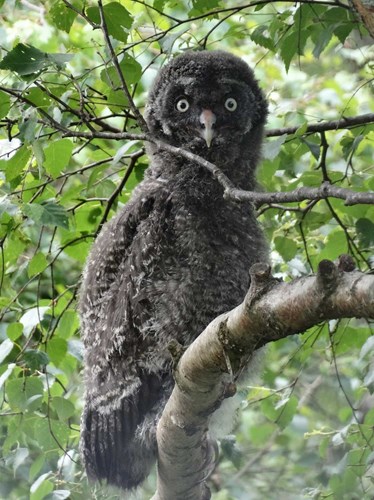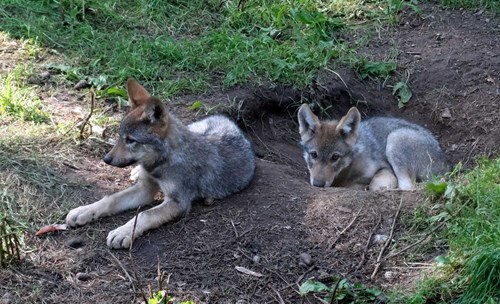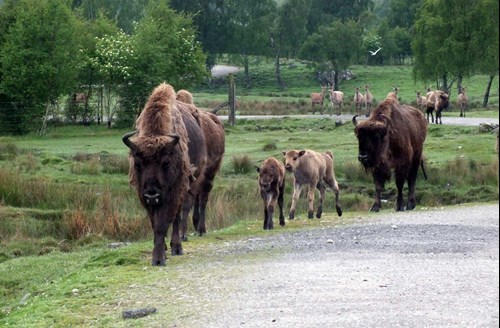Highland Wildlife Blog - This Year’s Babies at the Park
12/09/2016 in Highland Wildlife Park
By Douglas Richardson, Head of Living Collections, RZSS Highland Wildlife Park
Because we specialise in just cold weather adapted species at the RZSS Highland Wildlife Park, our animals are all seasonal breeders and tend to produce young during late spring to mid-summer, when the climate is a bit easier on the growing offspring. By September, we usually have all the baby animals that are likely to be born during the year, and we currently have 54 youngsters running and flying around, from 15 of the species we keep.
Young birds are represented by 2 Temminck’s tragopan chicks, a highly colourful pheasant from China and northern India, and a snowy and two great grey owlets (baby owls).

We have had four baby snow monkeys born this year, which brings the group size up to 27; the only group of this most northerly primate in the UK. The lynx and the Scottish wildcats have once again produced kittens with three lynx and seven wildcat kittens now out and about with their parents. The wildcats are out of three different litters, which represents possibly our best year ever with this, Scotland’s most threatened mammal. Our current wolf pair bred for the first time and produced six pups, but possibly the most exciting carnivore birth this year was our wolverine twins, a Scottish first.

A large percentage of our animal collection are hoofed mammals and this group has as usual been quite prolific. We have two Przewalski’s (pronounced “shevalsky) horse foals and three European bison calves. These two species represent ongoing captive conservation success stories as both became extinct in the wild and were saved and later reintroduced back from zoo populations; one of our home-grown bison is currently living with a wild herd in Romania.
Although most of our caprids (hoofed animals related to sheep and goats) did not breed this year as they were either being rested, female getting old or new male is still too young, we have had four Himalayan tahr, a sort of mix between a sheep and a goat, reared.
We do very well with deer and have offspring from four of our five species. The red deer herd has 12 calves and our European elk, a former Scottish species, once again produced twins. The threatened white-lipped deer, from the Tibetan plateau, and Bukhara deer, a form of red deer from central Asia that has been recently discovered to be hanging on in Afghanistan, produced three and one calves, respectively. One of the white-lipped calves was born to a female who had trouble producing milk and so he was hand-reared. But rather than removing him from the herd, he was bottle-fed in-situ and now runs with the other two calves and is not habituated to humans, as many hand-reared animals can be. This latter husbandry success is a real testament to the skills and dedication of the keepers concerned.

The list above does not contain tigers or red pandas, but this is not due to a lack of success, in fact it is indicative of quite the opposite. Because of the tiger cubs and red panda kits we produced in recent years, the respective breeding programme coordinators asked us not to breed this year due to space reasons. There is not an unlimited amount of good enclosure space for these species and breeding needs to be limited to avoid having more animals than the programme can manage. This may seem rather contradictory for two such threatened species, but managing animal populations within the limitations of the available resources and still enhancing their genetic diversity calls for some complex juggling.
The one further 2016 birth that we are currently preparing for, and it is by no means a sure thing, is that of the polar bear. Like our other species, polar bears are also seasonal breeders but they do not give birth until the end of the year and the cubs do not come out of the den until late winter to early spring. Hopefully we will have a couple more babies to add to our annual tally.
This piece was first published in the Strathspey & Badenoch Herald
Featured Articles

An update from the Budongo Forest
19/04/2024 in Conservation

Edinburgh Zoo named best zoo in Scotland
15/04/2024 in Edinburgh Zoo

























Follow EZ